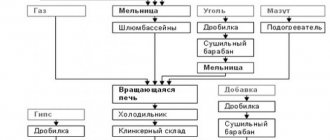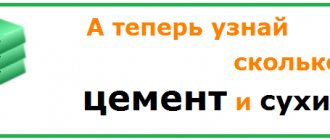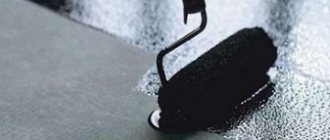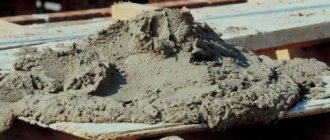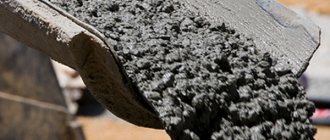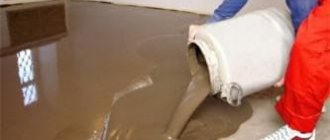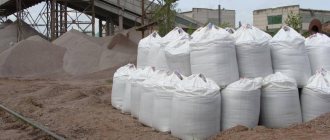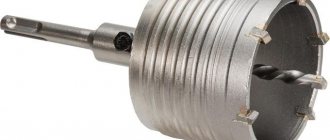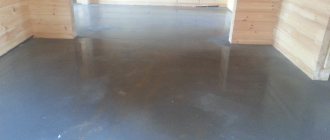The durability of the surface when installing flooring ensures functionality and durability. Concrete floors with a reinforced top layer are characterized by low surface water absorption and chemical resistance. One of the easiest to use and most economical is topping (strengthening with dry or liquid mixtures). The hardening mixture is rubbed into the surface of fresh or old concrete and rubbed with concrete finishing machines to ensure high adhesion. The treatment makes it possible to obtain a high-strength concrete layer with increased wear resistance up to 8 times, as well as reduce dust separation and the quality of the coating.
Areas of use
The installation of wear-resistant coatings is especially necessary in rooms with high mechanical or vibration loads - production shops with heavy equipment or loading equipment, parking lots, warehouses, platforms.
Floors with a reinforced top layer are in demand at facilities with high traffic volumes - train stations, entertainment and shopping centers, educational, medical and cultural institutions.
Industrial floors with hardening are indispensable in the food industry, where hygiene requirements are quite high.
Topping is used to cover the floors of car service centers and car showrooms, garages, hangars, where the top vulnerable layer of concrete is constantly in contact with diesel or gasoline fuel, mineral oils, and slightly alkaline liquids.
Surface treatment with hardeners increases the service life of the floors of swimming pools, sports fields and gyms.
Varieties
The construction industry offers dry and liquid floor toppings, differing in application technology:
- powder mixtures are scattered over the surface of fresh concrete, rubbed and thoroughly polished;
- Liquid compositions contain water; they are poured, leveled and allowed to dry completely, then the surface is sanded.
In the classical sense, toppings are dry substances rubbed into the surface. Liquid ones are more often called sealers.
In the manufacture of hardeners, the following abrasive materials are used as fillers:
The inclusion of basalt, iron or silicon carbides, and titanium oxide gives the toppings specific properties. Plasticizers improve the workability of mixtures, and antifreeze additives are used to increase frost resistance.
Common Mistakes
When using a strengthening mixture, a number of mistakes are often made:
- dry compactor is not used if the concrete contains superplasticizers, additives with saline solution;
- do not withstand the mandatory technological break;
- ignoring reinforcement or violating the procedure for laying embedded connections to maintain load differences;
- inconsistency between the timing of cutting and the depth of expansion joints;
- “savings”, incorrect selection of material.
Return to contents
Topping application method
The difficulty of working with concrete floors lies in the stages.
Prepare the base
Receiving concrete
Compaction and leveling
Layer hardening
Having gone through the stages of laying out, compacting, and leveling, it is necessary to take a technological pause, during which the concrete acquires durable characteristics. The hardening process takes from two to seven hours, the hardening time depends on humidity and air temperature:
Kawabanga! How many days should concrete be watered after pouring?
Grinding
Protective layer
Shrink seams
Three days after completion of work, it is important to make temperature-shrinkable seams. They compensate for temperature processes during hardening and changes in the slab during operation. The process diagram is taken into account in the design documentation.
Hermitization
Three weeks after cutting, the seams are cleaned of dust, filled with a special sealant and hermetic paste.
Waterproofing
When installing floors, it is optimal to use rolled materials. Good protection against chemicals, aggressive liquids, and water is provided by waterproofing, PVC film, and duplicated polyethylene.
Protection against sewage ingress is implemented when it impacts the structure with medium or high intensity:
- in unheated rooms;
- if the base is represented by heaving, swelling, subsidence soils;
- on floors exposed to oils and solvents;
- on floors on soils and ceilings - under the action of alkalis, acids, solutions;
- in areas with the possibility of capillary rise of groundwater;
- when placing concrete preparation below the level of the blind area.
The principle of working with roll materials
Rolled materials are glued to cold and hot bitumen mastics. The base must be primed. According to the technology, if there is a slope, they begin to work from low to high areas. If the slope is not met, the rolls are rolled out from the walls towards the exit.
If sizing is carried out using hot mastics:
- First, the panels need to be adjusted. To do this, roll the rolls so that the transverse and longitudinal overlap is 100 mm;
- The rolled material is kept for 24 hours at a temperature not lower than +15 degrees. This will help eliminate bumps and waves;
- after this, all the panels, except the first longitudinal row, are rolled back;
- along the edge of the first longitudinal row, draw a sizing guide line with chalk;
- after drawing the line, the canvas of the first row is rolled up, leaving 50 cm;
- the lower edge of the folded part and the base are treated with mastic;
- part of the canvas with mastic is glued, pressing firmly to the base, from the middle to the edges, rolling with a roller;
- the roll is unrolled to the glued area, mastic is applied, leveled with a brush or a combined spatula from the middle of the strip to the edges;
- then coat the edges of the canvas and roll it;
- the next roll is applied in the same way, observing an overlap of 10 cm, smearing the edges and rolling with a roller;
- subsequent rows are glued in the same way.
The roll is rolled out, focusing on the chalk line, pressed tightly from the middle to the ends
When the first layer is ready, begin to apply the second, following the specified technology. The longitudinal overlap should be 20 mm. It is necessary to ensure that the material is laid staggered. If they work with roofing felt, roofing felt, glass roofing felt and similar materials; Hot mastics should be applied to the entire area of the sticker . When working with Brizol and Izol, the mastic is also applied to the base and leveled before gluing the rolls.
If cold bitumen mastics are used, they are applied with a thickness of 0.4-0.5 mm, working several hours before rolling out and gluing the rolls. During this time, the bulk of the solvent will volatilize. In fact, the time from application to gluing depends on humidity, air temperature and the amount of solvent contained in the mastic. Other requirements remain the same as in the case of hot mastics, but the rolling of laid panels increases to 4-6 approaches .
For moderate moisture exposure, bitumen-based adhesive insulation can be used. The material is laid in two layers. If the insulation is polymer - in one layer. At high intensity, the number of layers doubles.
The use of bitumen adhesive insulation or tar-based materials is ineffective if organic solvents and mineral oils act on the base in large quantities. Otherwise, the technology is extremely simple - before laying, tar or bitumen mastic is placed on the base, respectively, + sand bedding of a fraction of 1.5-5 mm and waterproofing is applied. The protective layer must be continuous over the entire surface of the floor . In places adjacent to vertical structures, the material is brought to a height of up to 30 cm from the level of the floor covering.
As an alternative solution, waterproofing can be done using crushed stone or other bulk materials, impregnating them with hot bitumen. This solution is implemented after laying the crushed stone. The layer is impregnated manually or using special equipment, so the hot bitumen will form a continuous, uniform layer up to 6 mm thick.
If the crushed stone filling will be carried out in several layers, first stone fines are poured over the lower layer of bitumen, followed by compaction with a roller. To prevent the material from sticking to the compaction equipment, it is treated with a solvent . Next, apply the next layer 0.2-0.25 mm thick, sprinkled with sand up to 5 mm in size or fine stones.
If a decision is made to use coating insulation, it is applied to a dust-free, leveled, primed base. The material can be bitumen mastics or polymer-based solutions. Such compositions are distributed using sprayers, and for a small amount of work - manually. Application should be uniform, without gaps. A layer of equal thickness should be provided - 0.5-2 mm.
Each subsequent layer is applied after the previous layer applied has completely dried. This can be easily determined by the fact that it stops coming off. At the joints, first apply mastics, then stick the rolled material in strips, then again apply the mastic composition evenly.
Asphalt waterproofing based on cold mastics is also carried out on primed prepared bases . Materials are laid on the floor, starting from vertical structures, for example, partitions and walls, applied in strips of 1-2 layers, no more than 5 mm thick.
Subsequent layers are applied after stabilization of the previous ones, which is also checked for tack. Matings must provide an overlap of 200 mm.
Asphalt waterproofing based on hot mastics and cast mixtures is laid on the prepared base in a uniform continuous layer with an overlap of 15-25 mm. The finished layer is leveled and compacted with trowels. The following are applied after the mastics have cooled. The joints of the previous and next layers should be spaced apart . The finished top surface must be smooth, of the required thickness and with the required slope.
Topping floors - dry hardeners for concrete produced by ALFAPOL
- " ALFAPOL TOP 100 topping " - dry concrete hardener
- " ALFAPOL TOP Corundum topping " - dry concrete hardener based on corundum filler
- " ALFAPOL TOP Spark-safe topping " - dry non-sparking concrete hardener
Corundum filler is suitable for floors with high abrasive loads. Sometimes a concrete hardener with metal filler is used for floors operating in particularly difficult conditions, for example, in metallurgical plants.
The table presents comparative performance characteristics of the strengthened layer from sources available in the technical literature.
Concrete floors with topping are so affordable in price and labor costs that they are widely used abroad and in our country.
We strengthen it with a polymer coating
This method is distinguished by a relatively low price and high efficiency:
- To apply a polymer coating, it is necessary to carry out preliminary preparation of the base. If the concrete composition is fresh, be sure to grout it. Most often, special machines are used for this.
- Before covering, make sure that the subfloor is not too wet.
Advice! The best way to check the moisture content of concrete is the following: turn the jar upside down, leaving it in this position on the concrete screed for a day. If the jar sweats, the base is not ready, but if not, it is dry enough for work.
- Fresh concrete can withstand for at least a month, only then a hardener is applied.
- If the base humidity exceeds 4%, use special primers for treating the floor.
- A polymer coating can be applied to the prepared base. Most often it is applied in three layers. Each of them is aged for at least 6 hours, after which a new layer is applied. When applying paint, the base of the floor should have a temperature within 10-30 degrees with an air humidity of no more than 75%.
Strengthening with a polymer coating.
Application of liquid hardener
- sprayer;
- roller;
- spilling of the hardener from the container and uniform distribution over the surface.
Important information! Work must be carried out at a temperature of 5-35ᵒC. Those areas that strongly absorb the substance are treated additionally.
Important information! The floor cannot be used earlier than 24 hours after applying the topping. Full operation is possible only after a week.
During the process, you should use personal protective equipment - goggles, rubber gloves, work shoes. It is also worth remembering that the liquid topping is fire and explosion proof.
Scheme of a concrete floor with topping
Treatment
After compaction and setting of the concrete mixture is completed (when only light traces remain on the surface), it is necessary to carry out primary processing. For this purpose, smoothing and troweling machines with troweling discs are used.
During processing, a finishing horizon is formed, in addition, we can talk about correcting minor defects that could have been made during pouring and compaction. After 1-6 hours, secondary treatment is carried out. Blades are used instead of disks . In hard-to-reach places they operate manually.
If the vacuum technique was used, you can immediately begin smoothing. The first treatment is carried out using machines with discs, the second – 3-5 hours after the initial one , but with blades (the disc is not removed).
What is topping?
Topping is a hardening dry mixture that is applied to concrete after the main pour, which makes the top layer one with the base.
Its installation does not require a lot of time: all work on strengthening the top layer is carried out simultaneously with the main work on constructing the floor.
Reinforced concrete floors are used in manufacturing plants, warehouses, retail and other facilities with a high level of mechanical load on the floors and increased requirements for the wear resistance of coatings.
Don't waste time on the Internet!
Call us at 8-800-333-10-18 - we are free
Let's calculate the cost of the topping floor! All work will be
completed with high quality and on time, we provide a guarantee for floors of 3 years.
Milling and grinding
This type of processing requires the removal of construction debris, parts, fixtures and mechanisms. Milling is carried out using conventional cutting diamond wheels placed on one shaft, cutters with a diameter of 250-500 mm.
Processing is carried out in parallel strips. Each subsequent strip should overlap the previous one by 2-3 cm .
The processing depth in one pass varies between 2-7 mm, which is based on the physical and mechanical characteristics of concrete
In general, the treatment lasts until the aggregate grains are maximally exposed, that is, the concrete must reach a strength at which it cannot crumble. Two-stage processing is effective, including primary milling and further grinding in 1-2 steps. The total thickness of the surface removal is 5-7 mm . The resulting sludge must be removed from the work site in a timely manner. Depending on the processing area, grinding can be carried out by machines or manually.
What is the price?
We bring to your attention our price list for pouring industrial concrete floors with a reinforced top layer (topping).
| Price list for concrete floors with topping |
Our specialist will calculate the exact cost of topping floors for you after reviewing the technical specifications.
Do you need an exact flooring cost?
Send a detailed task or project by email
! Our specialists will make a calculation for you
Correct use of technology
Scheme for laying concrete floors with a reinforced top layer.
Strengthening a concrete surface is a responsible and complex task. To perform it, you will need experience and special equipment. If the procedure is violated, changes are possible: cracks, peeling.
Concrete mixtures for coating are prepared in the generally accepted manner. The thickness of the layer and the procedure are no different from ordinary laying of concrete floors. Distinctive features arise at the final stage of processing. Work is carried out with the top, freshly laid concrete thickness. After going through the leveling process, the solution is treated with reinforcing compounds. Hardeners can be dry or liquid.
Topping – strengthening with dry compounds. The composition of the dry mixture includes: Portland cement, wear-resistant filler, additives, color component. The mixture is distributed evenly over the entire surface, compacted and smoothed with the blades of a construction machine. The final effect is hardened surfaces with increased wear resistance, no dust and a beautiful appearance.
Return to contents
Work examples
Installation of 850 m 2 of concrete floor with topping in Nizhny Novgorod.
Kawabanga! Composition and proportions of concrete grades, components and preparation
Pouring an industrial floor with topping with an area of 576 m2 in a car service building.
Installation of a topping floor in a warm hangar in the Nizhny Novgorod region.
Filling 1000 sq. m of concrete floor with topping in Nizhny Novgorod. The entire complex of work on pouring the floor on a turnkey basis was completed at the site.
Peculiarities
As concrete floors are used, cracks and chips may appear in their structure. The top layer gradually collapses and forms dust. Dust is very harmful to humans and can lead to various diseases.
Topping may be the solution to the problem. This is a reinforcing compound applied to the top layer of concrete to strengthen it.
The topping is applied to a concrete surface by laying and rubbing. It consists of the following components: plasticizer, cement and fillers with dyes.
The main characteristics of the topping largely depend on the type of plasticizer. These are special additives made from surfactants. They should be considered in more detail.
There are several types:
Additives can also be complex, combining all the properties described above.
Plasticizers help reduce concrete consumption, increase the degree of adhesion and reduce the cost of work. They are also used when laying heated floors, when pouring foundations, and when installing self-leveling floors.
According to consistency they are distinguished:
This type of topping can be applied to both freshly laid concrete and older concrete. It is applied and left until completely dry, then sanded.
- Dry topping is usually powdered or crumbled. It is crumbled, then compacted and sanded. The dry method of application is more popular among buyers because it gives more characteristics to concrete than the liquid method.
Based on the composition of the dry filler used, there are:
- Quartz with dyes. It is used to strengthen and decorate floor coverings. Suitable for floors with medium loads: in a store, garage or warehouse. Quite suitable for use in private construction;
- Made from corundum. This filler is designed for concrete floors with heavy loads and frequent use. Gives strength and abrasion resistance. Has a low shine;
- With metal particles. This composition is recommended for floors designed for very high loads and exposure to heavy equipment. But, as you know, metal is susceptible to corrosion when exposed to water.
Based on application methods, the following types of topping are distinguished:
Concrete work during preparation
Concrete is delivered to the site using concrete pumps or prepared independently. It is as simple and fast as possible to operate concrete pumps, which ensures uniform distribution of the mixture. This method always wins when there is a large volume of work.
But in this case, the following must be organized at the facility:
- concreting is carried out continuously, long breaks are excluded;
- the pump should be supplied with solution as rhythmically as possible. Simply put, they minimize the loss of time for cleaning and preparing for work;
- It is better to outline the scope of work in advance, which will increase the efficiency of actions;
- control the quality of concrete and its consistency in advance.
It should be taken into account that concrete pumps work with solutions with a slump of 8 cm, while concrete preparation requires 0-1 cm. All this leads to a high w/c ratio and increased cement consumption. To maintain the required mobility, plasticizers should be used.
When laying the mixture, the reinforcement cannot be moved from its place, but the installation of the mesh can be adjusted . The base surface is concreted according to maps, starting from the most distant one. The side faces that form expansion joints are coated with hot bitumen if the work cannot be completed in one work shift. The bitumen layer should be 1.5-2 mm.
Shrinkage joints are formed along the freshly poured coating. A metal profile 4-5 mm thick and 80-100 mm wide is recessed into the surface. The material is buried to a third of the thickness of the concrete preparation and left there for 20-40 minutes, after which it is removed. When the slab has hardened, the shrinkage joints are filled with hot bitumen or cement mortar .
If concrete preparation is arranged near channels, pits, foundations, concreting is carried out in separate sections. The material is traditionally leveled and compacted using vibrators.
If lighthouse slats are required, they are made from boards. The height of the board should be equal to the height of the concrete preparation. A width of 4-6 cm is sufficient. The slats are fixed to the base with wooden pegs, which are driven to a depth of at least 30 cm in increments of 1.5 m. A channel can serve as an alternative material. If the structure contains a slope, it is provided with an underlying layer , when the lower and upper edges of the beacons are cut off in accordance with the slope.
When concreting the preparation with cards, it is necessary to install formwork
If the amount of work is small, you can proceed according to the simplest scheme. The solution is supplied to the prepared base and leveled with shovels and vibrating screeds along the beacons. After filling is completed, the surface is treated with trowelling machines.
Advantages and disadvantages
The use of concrete with a top layer of topping has the following advantages:
It is worth noting that topping only improves the properties of the concrete coating. Therefore, for work you need to choose high-quality concrete of a grade higher than M300.
Excess water in concrete will cause deformation for the top layer when drying. A lack of moisture will lead to an increase in the drying time of the topping; it will be loose and unevenly dried.
If the concrete is dirty or dusty, the applied topping may peel off.
The final appearance of the topping will depend on the uniformity of its installation and grouting. If the work is done incorrectly, restoring and repairing the topping will be expensive.
Installation of reinforced concrete floors
Concrete coverings are laid on underlying layers (rigid and semi-rigid), on soils, and on reinforced concrete floor slabs. Work is carried out at an air temperature of the base not lower than +5 degrees . This temperature regime should be maintained until the concrete reaches half its design strength.
In general, the structure looks like this:
- finishing coating;
- concrete screed;
- layer of hydro, heat and sound insulation;
- concrete underlying layer or sand-crushed stone cushion;
- priming.
To prepare concrete, use Portland cement of at least M400 grade strength , gravel or crushed stone, water, and medium-grained construction sand. If you are installing an explosion-proof (non-sparking) coating, you should take sand and crushed stone from marble, limestone or other stone materials that do not generate sparks when hitting stone/steel objects. However, it would not hurt to additionally check the absence of sparks by testing the starting materials on a grinding emery wheel.
The size of gravel and crushed stone for a concrete floor should not be higher than 15 mm or no more than 0.6 mm of the thickness of the coating. The average consumption of coarse aggregate is 0.8 cubic meters per 1 cubic meter of concrete. Sand occupies 10-30% of the volume of voids in gravel or crushed stone.
The grade of concrete cannot be lower than M200 . The mobility of the solution is taken into account - 2-4 cm. To reduce labor costs for leveling, C-3 plasticizers can be introduced into the formulation, which sharply increase the mobility of the solution (but then the option of subsequent hardening is immediately taken into account).
Operating principle:
- Before installing concrete coverings, the underlying layer must be cleaned of dust and dirt. If greasy stains are found on the base, they are removed with a solution of soda ash (5%), after which rinsing with clean water is required;
- cracks between floor slabs, areas adjacent to walls, various mounting holes are repaired with cement-sand mortar M150 flush with the surface of the slabs;
- Beacons are installed on the underlying layer using a profile, steel pipes or wooden blocks. The height and diameter of the material must correspond to the thickness of the future coating;
- beacons are installed in parallel with the longest wall of the room;
- the first row is placed at a distance of 0.5-0.6 m from the wall;
- subsequent rows are placed parallel to the first, with a step of 3 m;
- beacons are installed over the entire area at once, or in accordance with the fill maps. The slats must be aligned along the axis, offset by their own width;
- installation is carried out using cement mortar, followed by leveling. To adjust the position, use hand pressure or a hammer blow. If necessary, an additional solution is applied under the guides;
- if it is necessary to provide a slope, the beacons are installed so that their top corresponds to the required slope.
The presence of a slope and the horizontality of the layers are checked with a control rod or level
Before laying the concrete mixture, the underlying layer is abundantly wetted with water . By the time of pouring, the base should be damp, but without excess water. The work area is prepared taking into account the principles of preparation or delivery of the material, laying it before setting. Water and cement should not be added to the prepared solution.
For large pouring areas, concrete is delivered from an organized concrete mixing unit directly to the construction site using concrete mixer trucks. If the floor is installed in a one-story industrial building, the solution is delivered directly to the concreting strips. In all other cases, concrete is unloaded and delivered to the work site by lifts or cranes.
The solution is laid on the prepared underlying layer, following the beacons, in stripes every other . The material is leveled with shovels or scrapers. The leveled surface should be 3-5 mm higher than the beacons, but taking into account subsequent vibration treatment. The missing strips are filled in after the beacons are dismantled. So the concreted areas will act as both formwork and guides.
It is recommended to lay damper tape at the junctions with the columns to prevent deformations in the event of possible settlement of the building.
Compaction is carried out by vibrating slats - they are moved along the beacons using flexible rods . The vibration time is until moisture appears on the surface. Excessive impact can lead to settlement of coarse aggregate and delamination of the screed.
The speed of movement of the vibrating slats is 0.5-1 meter per minute. When moving the tool, a concrete bead 2-5 cm high should be formed at the lower edge. In hard-to-reach places (wall areas, areas near equipment foundations), compaction is carried out using tampers weighing at least 10 kg.
If the work cannot be completed in one work shift, after a break, the vertical edge of the hardened layer is cleaned of dirt, dust, and washed with water. Where working seams are located, compaction and smoothing are carried out until the seam is no longer noticeable.
If the concrete pavement is laid over a rigid concrete preparation, it makes sense to carry out all the work at the same time. To do this, the vacuum method is used. This makes it possible to ensure higher grade strength of concrete in the surface layer (30% higher than the original). The finished structure has superior physical and mechanical characteristics, and in total it ensures high quality coating.
The principle of vacuuming is that concrete with a slump of 9-11 cm (due to the additional addition of water) is processed with a vibrating screed . Next, excess mixing water is removed from the concrete body using a vacuum unit and special suction mats.
The evacuated mixture becomes rigid and durable even for immediate processing with smoothing machines.
The operating principle is as follows:
- the laid mixture is compacted in a layer up to 10 cm with vibrating laths, over 10 cm and in the presence of reinforcement - with deep vibrators;
- Suction mats are placed on the leveled and compacted concrete. Connection is made to the vacuum unit using a flexible hose with connectors;
- it is necessary to monitor the tightness of the vacuum system;
- evacuation is carried out at 0.07-0.08 MPa. Duration of work – 1-1.5 minutes per 1 cm of concrete layer thickness;
- work is stopped when there is no movement of water in the pipeline. Concrete should gain density when a faint footprint remains on the surface;
- the unit is turned off, the suction mats are removed.
Materials for strengthening the top layer
Currently, there is a fairly wide selection of additives on sale, both domestic and imported. This allows you to choose the optimal type for each specific case.
Kawabanga! Pouring a roof with concrete: rules and stages of the process
Table. A short list of the most commonly used materials and their technical characteristics
